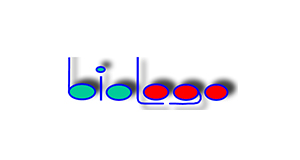Collagen Type III, rat
Collagen Type III, rat
SKU
BILCO20341-0.1
Packaging Unit
0,1 ml
Manufacturer
BioLogo
Availability:
loading...
Price is loading...
Background: Type III collagen is an alpha1(III)-trimer, which forms 67 nm cross-banded fibrils. Typically it can be observed in skin, cartilage and vitreous body. Collagens consist of a family of highly specialized glycoproteins of which at least 16 genetically distinct types are known to date. The basal unit of a collagen molecule consists of a triple-helical structure formed by 3 alpha-chains. Predominant amino acids are glycine, proline and hydroxproline. Regularly also lysines and hydroxylysines occur, which are responsible for cross-linkage and glycosylation of the protein chains. Different composition of alpha-chains and different glycosylation contribute to the high variability of collagens in different tissues and organs. Rat collagen type III 100%, rat collagen I <0.1%; rat collagen type V <10%; rat elastin <0.1% (solid phase RIA at 1:50 dilution).
Positive Control: Rat skin or liver
Immunogen: Purified collagen type III from rat skin
Purification Method: affinity purified antibody lyophilized from phosphate buffered solution; no BSA and preservative added!
Concentration: app. 1 mg/ml
References: 1. Bouvier M., Couble M.L., Hartmann D.J., Magloire H. (1991) Isolation and characterization of rat alveolar bone cells. Cell Mol. Biol. 37, 509-517.» 2. Breen E., Falco V.M., Absher M., Cutroneo K.R. (1990) Subpopulations of rat lung fibroblasts with different amounts of type I and type III collagen mRNAs. J. Biol. Chem. 265, 6286-6290. 3. Vialle-Presles M.J., Hartmann D.J., Franc S., Herbage D. (1989) Immunohistochemical study of the biological fate of a subcutaneous bovine collagen implant in rat. Histochemistry 91, 177-184. 4. Al Adnani M.S. (1989) Differential immunohistochemical localization of cytokeratins and collagen types I and III in experimentally-induced cirrhosis. J. Pathol. 159, 151-158.
UniProt: P13941 (CO3A1_RAT
Caution: *These antibodies are intended for in vitro research use only. They must not be used for clinical diagnostics and not for in vivo experiments in humans or animals.
Positive Control: Rat skin or liver
Immunogen: Purified collagen type III from rat skin
Purification Method: affinity purified antibody lyophilized from phosphate buffered solution; no BSA and preservative added!
Concentration: app. 1 mg/ml
References: 1. Bouvier M., Couble M.L., Hartmann D.J., Magloire H. (1991) Isolation and characterization of rat alveolar bone cells. Cell Mol. Biol. 37, 509-517.» 2. Breen E., Falco V.M., Absher M., Cutroneo K.R. (1990) Subpopulations of rat lung fibroblasts with different amounts of type I and type III collagen mRNAs. J. Biol. Chem. 265, 6286-6290. 3. Vialle-Presles M.J., Hartmann D.J., Franc S., Herbage D. (1989) Immunohistochemical study of the biological fate of a subcutaneous bovine collagen implant in rat. Histochemistry 91, 177-184. 4. Al Adnani M.S. (1989) Differential immunohistochemical localization of cytokeratins and collagen types I and III in experimentally-induced cirrhosis. J. Pathol. 159, 151-158.
UniProt: P13941 (CO3A1_RAT
Caution: *These antibodies are intended for in vitro research use only. They must not be used for clinical diagnostics and not for in vivo experiments in humans or animals.
| SKU | BILCO20341-0.1 |
|---|---|
| Manufacturer | BioLogo |
| Manufacturer SKU | CO20341-0.1 |
| Package Unit | 0,1 ml |
| Quantity Unit | STK |
| Reactivity | Rat (Rattus) |
| Clonality | Polyclonal |
| Application | Immunofluorescence, Immunohistochemistry (paraffin), ELISA, Radioimmunoassay (RIA) |
| Host | Rabbit |
| Product information (PDF) | Download |
| MSDS (PDF) |
|

 Deutsch
Deutsch







